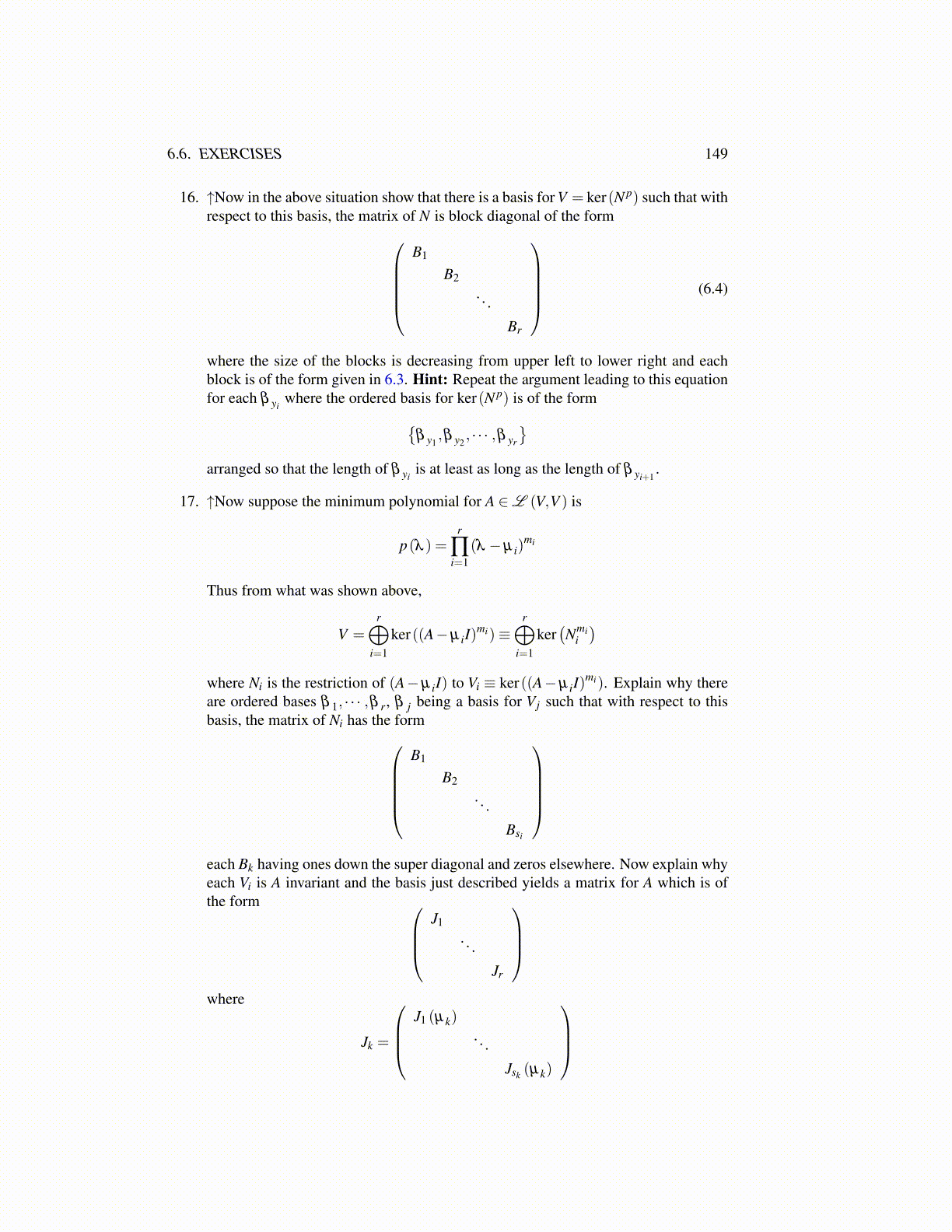
6.6. EXERCISES 149
16. ↑Now in the above situation show that there is a basis for V = ker(N p) such that withrespect to this basis, the matrix of N is block diagonal of the form
B1
B2. . .
Br
(6.4)
where the size of the blocks is decreasing from upper left to lower right and eachblock is of the form given in 6.3. Hint: Repeat the argument leading to this equationfor each β yi
where the ordered basis for ker(N p) is of the form{β y1
,β y2, · · · ,β yr
}arranged so that the length of β yi
is at least as long as the length of β yi+1.
17. ↑Now suppose the minimum polynomial for A ∈L (V,V ) is
p(λ ) =r
∏i=1
(λ −µ i)mi
Thus from what was shown above,
V =r⊕
i=1
ker((A−µ iI)mi)≡
r⊕i=1
ker(Nmi
i
)where Ni is the restriction of (A−µ iI) to Vi ≡ ker((A−µ iI)
mi). Explain why thereare ordered bases β 1, · · · ,β r, β j being a basis for Vj such that with respect to thisbasis, the matrix of Ni has the form
B1
B2. . .
Bsi
each Bk having ones down the super diagonal and zeros elsewhere. Now explain whyeach Vi is A invariant and the basis just described yields a matrix for A which is ofthe form
J1. . .
Jr
where
Jk =
J1 (µk)
. . .
Jsk (µk)